The use of TIC and learning styles in students university students from a Professional School of Medical Technology, Lima-Perú
DOI:
https://doi.org/10.20453/rhr.v5i1.4255Keywords:
Learning styles, ICT use, active style, heoretical style, reflective style, pragmatic styleAbstract
Objective: To determine the relationship between the use of Information and communications technologies (ICT) and learning styles in university students of the Professional School of Medical Technology of the Universidad Peruana Cayetano Heredia (UPCH). Material and Methods: The design was non-experimental, basic, correlational cross-sectional. Our population was 458 students from the UPCH Professional School of Medical Technology and the sample was 210 participants. The REATIC version 2020 questionnaire was used. The data were analyzed with the statistical program SPSS version 25 and the correlation was obtained through Spearman’s Rho Coefficient. Results: The results showed a direct correlation and positive between the variables, having a p = 0.000 (< a α = 0.05) and a Rho coefficient with values between 0.499 and 0.291 depending on the learning style. Conclusions: Based on the results and the main objective, it is concluded that there is a direct and positive relationship between the variables Use of TIC and learning styles in the university students of the Professional School of Medical Technology of the UPCH, obtaining a p = 0.000 (< a α= 0,05) and a moderate correlation strength for Theoretical (Rho: 0.499), Reflective (Rho:0.434) and Active (Rho: 0.425) learning styles, for the Pragmatic style the correlation was low (Rho: 0.291).
Downloads
References
Acosta C. La relación entre los estilos de aprendizaje y el uso de las tecnologías de información y comunicación en educación de personas adultas. Revista Electrónica Educare. 2016; 20(3):1-18.
Ávila D. Hacia una reflexión histórica de las TIC. Hallazgos. 2013; 10(19): 213-233.
Castañón B. Los avances tecnológicos y la cultura digital. Bogotá: Gestiopolis; 2012. (Citado el 15 de febrero del 2022) Disponible en: https://www.gestiopolis.com/los-avances-tecnologicos-cultura-digital/
Instituto Nacional de Estadística e Informática. Las Tecnologías de Información y Comunicación en los Hogares: Ene-Feb-Mar 2021. Lima: Instituto Nacional de Estadística e Informática; 2021.
Escudero H. Nativos digitales ¿Realidad o Mito? Cadiz: FORMACIONIB; 2018. Recuperado de: http://formacionib.org/noticias/?Nativos-digitales-Realidad-o-Mito
Luis M. Los estilos de aprendizaje y su relación con el uso de la plataforma MOODLE-EVD en los estudiantes de una universidad privada en Lima. Tesis de Maestría. Lima: Universidad Peruana Cayetano Heredia; 2019. (Citado el 15 de febrero del 2022) Disponible en: http://repositorio.upch.edu.pe/bitstream/handle/upch/7721/Estilos_LuisMiranda_Cecilia.pdf?sequence=1&isAllowed=y
Cózar G. Conocimiento y Uso de las Tecnologías de la Información y las Comunicaciones (TIC) según el Estilo de Aprendizaje de los Futuros Maestros. Formación Universitaria. 2016; 9(6): 105-118.
Rodríguez T. Estilos de aprendizaje y valoración de las TIC en el desarrollo de estrategias de aprendizaje, en un grupo de alumnos de una universidad privada de Lima Metropolitana. Lima: Universidad San Martin de Porras; 2019. (Citado el 15 de febrero del 2022). Disponible en: https://repositorio.usmp.edu.pe/bitstream/handle/20.500.12727/5604/rodr%C3%ADguez_trm.pdf?sequence=1&isAllowed=y
Rojas H. Uso académico de las TIC’S que realizan los estudiantes universitarios de la Escuela Académico Profesional de Tecnología Médica, Universidad Nacional Mayor de San Marcos. Lima: Universidad Nacional Mayor de San Marcos; 2015. (Citado el 15 de febrero del 2022). Disponible en: https://cybertesis.unmsm.edu.pe/handle/20.500.12672/4737
Carhuancho G, Palma C. Las TIC y estilos de aprendizaje en estudiantes de enfermería de una universidad de Lima. Lima: Universidad Cesar Vallejo; 2015. (Citado el 15 de febrero del 2022). Disponible en: https://repositorio.ucv.edu.pe/handle/20.500.12692/7402
Madrid H, Sánchez S. Relación entre estilos y estrategias de aprendizaje con las TIC en estudiantes de educación superior de la Universidad Pontificia Bolivariana. Tesis de Grado. Antioquia: Universidad Pontificia Bolivariana; 2016. (Citado el 15 de febrero del 2022). Disponible en: https://repository.upb.edu.co/handle/20.500.11912/3682
Timiraos F. Uso y Valoración de las TIC en el aprendizaje musical por los alumnos de los conservatorios de música profesional y superior de A Coruña: Estudio de caso de uso de “IREALB” y “BAND IN A BOX” en el aula de improvisación. Coruña, España: Universidad Nacional de Educación a Distancia; 2015. (Citado el 15 de febrero del 2022). Disponible en: http://espacio.uned.es/fez/eserv/tesisuned:Educacion-Etimiraos/TIMIRAOS_FERRERIO_Elisa_Tesis.pdf
Rojas A. Retos a la Educación Peruana en el Siglo XXI. REICE. 2015;14(1): 101-115.
Santoveña C (2015) Metodología didáctica en entornos virtuales de aprendizaje. Etic@net. 2004; 3:1-9.
Downloads
Published
How to Cite
Issue
Section
License
All articles published in the Revista Herediana de Rehabilitación are under a Creative Commons Reconocimiento 4.0 International license.
The authors retain the copyright and grant the journal the right of first publication, with the work registered with the Creative Commons License, which allows third parties to use what is published whenever they mention the authorship of the work, and to the first publication in this magazine.
Authors can make other independent and additional contractual agreements for the non-exclusive distribution of the version published in this journal, provided they clearly indicate that the work was published in this journal.
The authors can file in the repository of their institution:
The research work or thesis of degree from which the published article derives.
The pre-print version: the version prior to peer review.
The Post-print version: final version after peer review.
The definitive version or final version created by the publisher for publication.

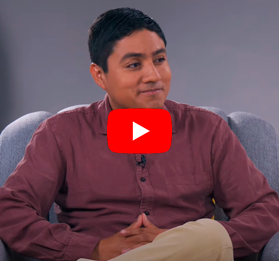





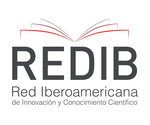
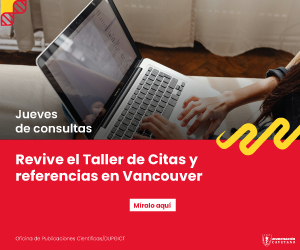
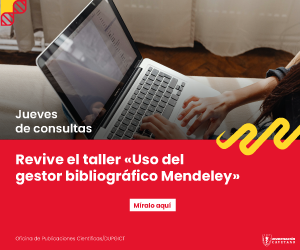
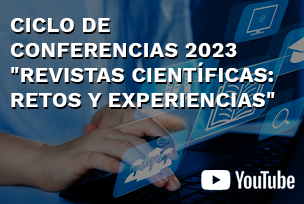
 Esta obra está bajo una
Esta obra está bajo una 